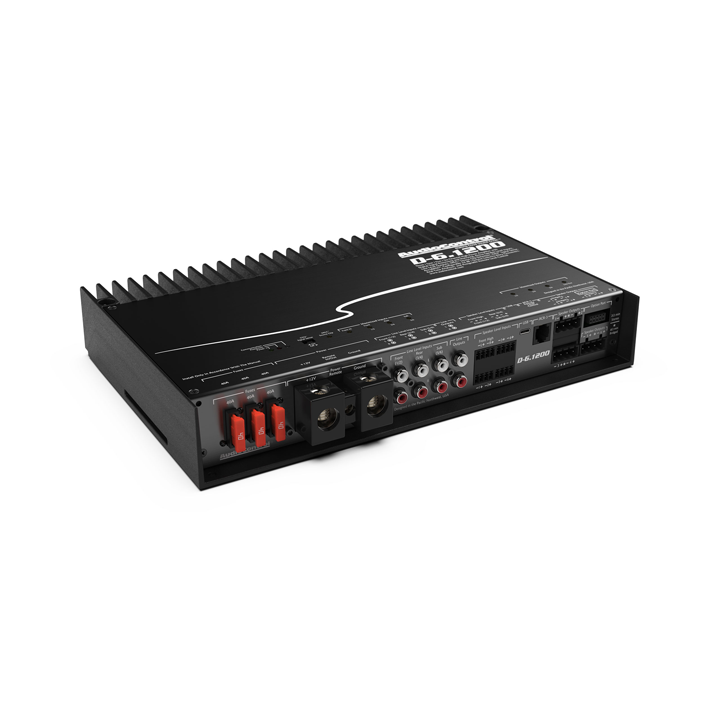Amplifier is the main component of any car audio system. Amp provides the speakers the energy to deliver their optimal performance in terms of clarity, depth and volume. However, car amps, just like any other equipment, do not last forever. Over time, they begin to exhibit wear and tear or they are just unable to keep up with improved speakers and sub woofers. Recognizing the early warning signals helps you avoid frustration and keeps your music sounding exactly as it should.
1. Distorted Sound at Normal Volume
One of the most common signs of a bad car amplifier is distortion at even moderately high listening levels. Instead of crisp highs and tight lows the music sounds fuzzy or unclear. This often occurs as components within the amp are no longer regulating power properly. While it's also possible to cause distortion with faulty speakers, if you've tested your setup and the issue continues to exist, the amp is most likely the problem.
2. Overheating During Regular Use
Car amps naturally produce heat, but constant overheating signals something is wrong. If you notice the amp frequently going into protection mode or shutting down, it may be struggling with outdated thermal management. This doesn’t just interrupt your listening experience, it also shortens the life of connected components. When an amplifier runs hotter than normal, upgrading to a more efficient model with better cooling design is often the only solution.
3. Lack of Power for New Speakers or Subs
Upgrading your speakers or adding a subwoofer should elevate your system. However, if the bass sounds weak or the highs lack presence, it could mean the amplifier isn’t supplying enough power. This mismatch creates a bottleneck where your new gear can’t reach its full potential. Knowing when to replace a car amp often comes down to noticing that your system sounds underwhelming despite recent upgrades.
4. Frequent Cutting Out or Power Loss
A good amplifier should give a stable signal. Sudden dropouts or cut in and out when driving: This means failing internal components, or voltage regulation failure. Failing wiring can sometimes be the problem, but if the connections are sound and the problem persists, it is probably a deteriorating amp.
These few activities to watch for:
-
Music fading in and out without touching the volume.
-
Amp shutting off at random even with proper grounding.
-
Protect light engaging frequently without clear cause.
These interruptions are not only annoying but also stressful for your speakers.
5. Audible Hissing, Popping, or Unusual Noises
Another red flag is hearing unwanted noise from your speakers when the system is idle or playing at low levels. A faint hiss, crackle, or popping sound points to failing capacitors or grounding issues inside the amplifier. Over time, internal wear creates electrical interference that you can hear through your system. If cleaning connections doesn’t solve it, the amplifier itself likely needs replacement.
6. Physical Damage or Burnt Smell
Although it appears to be self-evident, physical warning signs are not considered by many drivers. Amp burn marks or melted connectors or heavy burnt smell near the amp is a good indication that overheating or electrical failure has already occurred. By the time an amp gets this far, it is not always practical to repair. A new replacement is safe and will also improve the performance.
7. System No Longer Matches Your Listening Style
In some cases, the amplifier is not defective but it is no longer up to your expectations. When you come off of listening to a casual amp, you might find your older amp wanting. The current amplifiers have superior circuitry, larger efficiency and can drive high-wattage speakers. The upgrade also guarantees you the punch, clarity and detail that you may need with the current gear.
Why Timely Upgrades Matter
Operating an old or damaged amplifier does not only damage the quality of sound, it strains other components in your system. Speakers that have to run on unstable power can wear out sooner and batteries cannot work effectively under inefficient load. Switching out the amp before it fails fully can save your investment in the speakers, subs and head units.
When to Replace Car Amp: Quick Reference
If you’re unsure whether it’s time, here’s a quick breakdown of situations where replacement is the smart move:
-
Distortion continues after testing speakers and wiring.
-
The amp overheats regularly, even in mild conditions.
-
New speakers don’t sound any better with the old amp.
-
Frequent cutouts or protection mode interruptions.
-
Noticeable hiss, popping, or static noise.
-
Signs of burnt components or visible damage.
-
You want more output, clarity, or control than the current amp can provide.
Choosing the Right Upgrade
Not every amplifier is built the same. Matching the new amp to your system ensures you get the most from your setup. Consider wattage requirements, the number of channels you need, and whether you want Class D efficiency or a Class AB amp with a warmer tone. Checking the RMS power ratings of your speakers helps you select an amplifier that delivers clean power without straining.
Elite Auto Gear offers a wide range of amplifiers suited for different builds—from compact daily drivers to systems built for competition-level output. Selecting the right one not only restores lost performance but unlocks the full capability of your speakers and subwoofers.
Keeping Your Amp Performing Longer
Before the installation and maintenance process, a new amplifier has an increased life span. Make sure there is good grounding, ventilation and do not run the amp to full output over extended periods. Periodically clean up the terminals and have wiring checked as far as wear is concerned especially in areas where there is extreme heat or moisture. When well maintained, good quality amp will last many years giving good and effective services.








